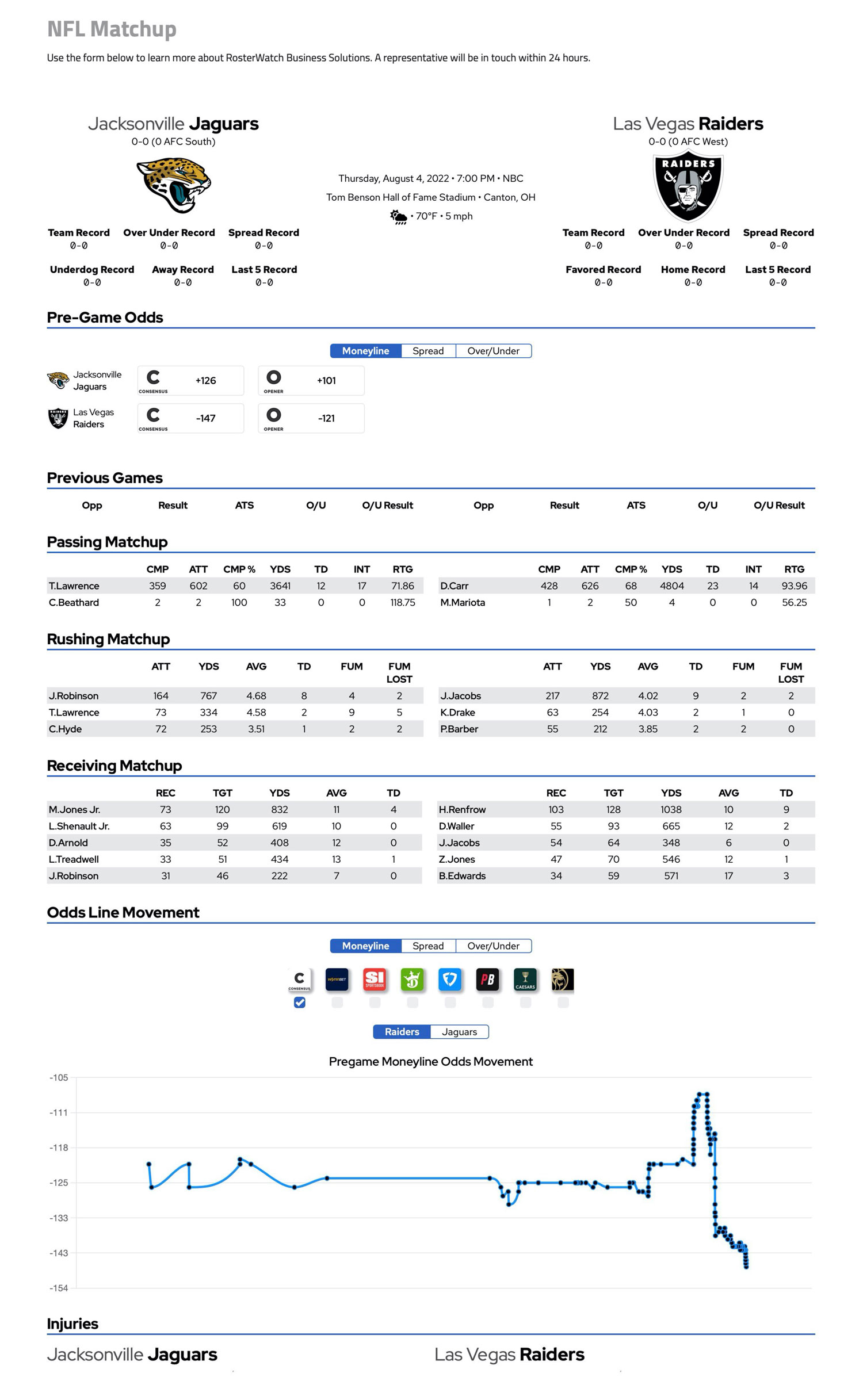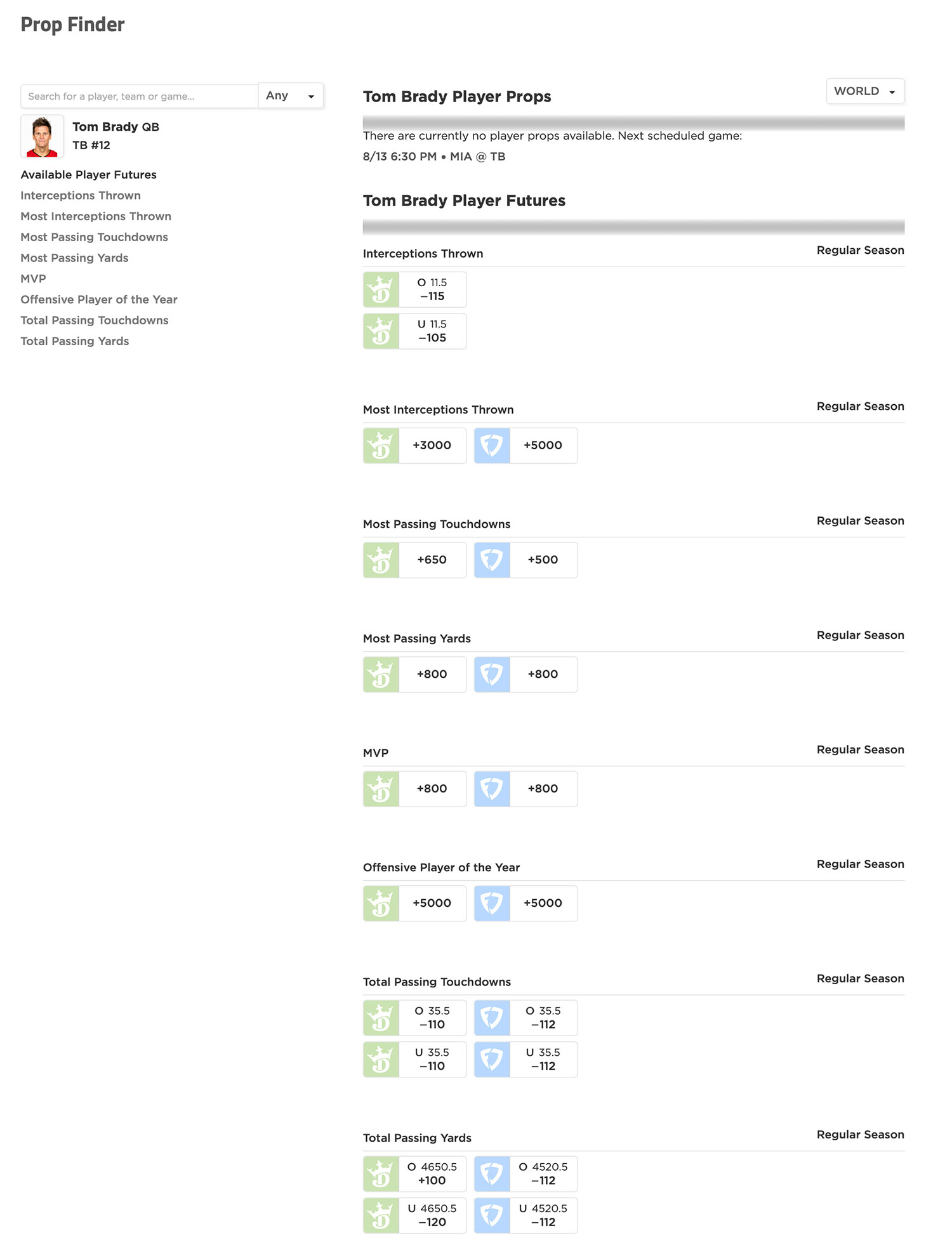
2019 Initial Strength of Schedule, Fast Start and Playoff Tool: TEs
 Longtime favorites of many in RosterWatch Nation are the Strength of Schedule and associated Fast-Start and Playoff Schedule tools. The tool is simple-to-use and designed to be an intuitive tie-breaking tool when faced with tough decisions in mock drafts while preparing for draft day. PRO MEMBERS: CLICK HERE TO GO TO YOUR DOWNLOADS SECTION TO DOWNLOAD THE TIGHT END TOOL.
Longtime favorites of many in RosterWatch Nation are the Strength of Schedule and associated Fast-Start and Playoff Schedule tools. The tool is simple-to-use and designed to be an intuitive tie-breaking tool when faced with tough decisions in mock drafts while preparing for draft day. PRO MEMBERS: CLICK HERE TO GO TO YOUR DOWNLOADS SECTION TO DOWNLOAD THE TIGHT END TOOL.
Please remember that all final draft decisions should come solely and only from the magical and mystical RosterWatch cheat sheet which will have all of this information and so much more baked in. However, it is always wise to know the kind of schedule your fantasy players will face and, at which points in the season you may expect upgraded or downgraded performance based on matchups. The tool is simple and intuitive to use, but if you have questions about how to use it, or how our proprietary matchup grades are formulated, please see below.
EXPLANATION OF THE TOOL
The matchup grades for each defensive unit the fantasy player will face are marked as always on the RosterWatch matchup tool. Cells on the NFL Schedule grid next to each opponent are color-coded in the same way as the world-famous and epic RosterWatch Matchup Tool:
RED: Awful Matchups (projected)
PINK: Bad Matchups (projected)
WHITE: Neutral Matchups (projected)
LIGHT BLUE: Good Matchups (projected)
BLUE: Excellent Matchups (projected)
The tool is a simple NFL Schedule grid with Weeks 1-16 visually represented via the type of matchup we are projecting it will be for the fantasy player. The three periods are all included in the visualization, but it is sorted by TOTAL DIFFICULTY-SEASON.
1) TOTAL DIFFICULTY: the full season’s total sum of matchup grades. The higher the total sum of grades, the higher the difficulty of the schedule. The teams are sorted from easiest to worst projected schedule for the position in question.
2) FAST-START: the total sum of matchup grades for the first four games of the season (as we put a HIGH premium on getting off to a fast star). The higher the total sum of grades, the higher the difficulty of the schedule. The teams are sorted from easiest to worst projected schedule for the position in question.
3) PLAYOFFS: the total sum of matchup grades for Weeks 14-16 (the fantasy playoff period in over 95% of leagues). The higher the total sum of grades, the higher the difficulty of the schedule. The teams are sorted from easiest to worst projected schedule for the position in question.
WHAT GOES INTO RW MATCHUP RANKINGS?
RosterWatch Matchup ratings ARE NOT REGULAR-OLD “FANTASY POINTS AGAINST” metrics!!!
In fact, these rankings will vary greatly from what you see elsewhere from outlets using such a worthless predictive metric as last year’s final fantasy-points-allowed tallies. While 2018 schedule-adjusted fantasy-points-against makes up a small portion of the overall mix of steps that make up our proprietary matchup algorithm in-season, what makes our unit matchup rankings so special is that the scores come predominantly from RW’s private matchup grades for every projected player who will be defending against the run, defending the receiver/tight end in coverage and rushing the passer. The preseason projections also take into account the latest Vegas win totals for each team in an effort to encapsulate some semblance of game-script projection. All of these private grades give us our initial baseline scores which go into our overall defensive unit rankings, but they also allow us to dissect the defense into groupings suited toward each fantasy position specifically.
PLEASE NOTE: These unit rankings are not necessarily the same as they will be on the Week 1 Matchup Tool as the Epic Matchup Tool utilizes a weekly feed of data that accounts for injuries specific to the game in question as well as Vegas indicators which can’t be reasonably predicted and/or accessed at this early point in the preseason. It does, however, give our early projections of how we expect the defensive unit in question to operate over the long haul of the season all things being equal.
ALSO NOTE: This is the initial tool and it may change a few times through fantasy draft season due to injuries to the personnel that is accounted for as well as slightly shifting win totals. Please always make sure you are using the latest version of the sheet.
***This tool is a decision-making, tie-breaker tool and is NEVER to be used as a substitute for the RosterWatch Cheat Sheet.
18 Comments
Leave a Reply
You must be logged in to post a comment.








Just drafted for my 12 team, standard scoring league Friday night. For as long as I can remember, and much to my chagrin, we’ve always drafted 12 rounds and filled out our final 3 spots with the wire. That being said, I didn’t draft a TE. The most intriguing to me, all things considered, especially with what I’m hearing from their respective camps are Andrews, Goedert, and Hockenson. I’d like to pick up at least two of these 3. Who should I take? Should I be worried about Philly and Detroit’s bottom barrel TE rankings on the sheet?
I think you prob go w/ Hockenson and Andrews
hey guys, im in a .5 ppr 10 team league… who would you rather keep in the 10th rd ekeler or donta foreman?
How long do you have to make the decision? This is one where we need all the time we can get to see how long MG is gonna hold out and how contract talks are going.
Drafting august 31… so we have a few weeks
Early Keeper question. Can only keep 1. Full PPR. Cost to keep a player is last years draft round. I also don’t have a 1st or 2nd rounder this year, have two 3rds and two 4ths.
Juju in 4th, Kelce in 4th, Edleman in 5th, Brandin Cooks in 6th, Chubb in 14th.
I would keep JuJu in the 4th and Chubb in the 14th, although I would not talk you out of Kelce and Chubb. JuJu/Kelce is a toss up in PPR.
Our 10 teamer has 2RB, 2 WR and 2 Flex. Should I adjust the WRs on the magical mystical sheet down a peg or 2 since I have the ability to start 4 RB, or am I better off leaving it alone and letting it do it’s work?
Thanks again for all the work you guys do.
I test it all the time with that exact setting, I would just use it as is and when you are faced with a WR vs. RB decision, maybe lean toward picking the RB if you’re most interested in RB depth.
Makes sense. Thanks
when’s the next podcast gonna drop?
I may do a quick HOF game DFS breakdown in the PRO section then we’ll have a cool guest on Thursday.
I’m in a start 1 QB dynasty league. I’m a legit top 3 contender but only roster Brees. If both cost the same to acquire, would you rather take dak or lamar jackson? Thanks RW
Probably Dak just because we know he is at least a baseline level NFL starter at worst. Lamar has more upside, but has more to prove as a passer before we know he’s going to stick around the league with any longevity.
Hey everyone, I have a generic Drafting strategy question. When should you break away from the 3 rule cheat sheet to fill out your roster slots? I’m drafting 2nd in a 12 team PPR on 31Aug. I did a mock draft, and it was at the end of the 10th round when I noticed I had 4 RB, 4 WR and 1 TE. So to make sure I had something, I did QB out of Cheat Sheet order. I know every draft will be different, but the main question stands, when is it a smart move to break away to fill out the roster?
The sheet had you on the way to a well-balanced roster, but you are always fine to deviate if things are getting too slanted one way or the other (we don’t recommend it though as the build is designed to target the positions you need if you were not able to get them early). You will rarely get a QB using the sheet until the double-digit rounds because that is optimal draft strategy. However, if your draft has idiots taking like 2 QBs before round 10 and it is looking like you’ll be left with absolutely nothing if you don’t deviate, it is fine to make that executive decision for your squad. The fact is that good QB options are literally going undrafted in many leagues, so we’ve designed the sheet to take advantage of this little edge.
Awesome! Thanks for the reply and the reassurance!
Good stuff, guys. Do you know when we can expect to see a 0.5 PPR Cheat Sheet? If the plan is Standard and full PPR like last year, which would you recommend using for 0.5 PPR? My leagues are all 0.5 and I know there will be some subtle differences, i.e. I wonder if Mike Evans would move above AB in 0.5 PPR vs what is shown in V3.6 of the PPR Cheat Sheet.